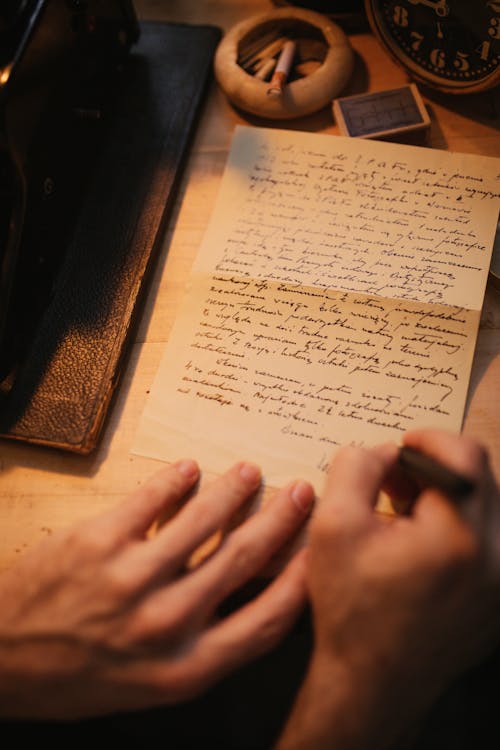William Shakespeare has always intrigued me to start studying English literature, and to become a writer myself, in a sense. Moreover, his adaptation of words usage is certainly very interesting, yet sophisticated in its own way. So, for today’s post, I thought that it’d be fun to share some fun facts about this man!
- His father and jobs
The son of a tenant farmer, John Shakespeare, was nothing but upwardly mobile. He arrived in Stratford-upon-Avon in 1551 and began to study various professions selling leather goods, wool, malt and corn. In 1556 he was appointed the council’s official ‘beer taster’, meaning he was responsible for inspecting bread and malt liqueurs. The following year, he took another big step up the social ladder by marrying Mary Arden, the daughter of an aristocratic farmer who happened to be his father’s former boss. John later became a moneylender and held a number of municipal positions, serving for some time as mayor of Stratford. In the 1570s, he fell into debt and got into trouble for unclear reasons.
2. Marriage
In November 1582, 18-year-old William married Anne Hathaway, an eight-year older farmer’s daughter. Rather than the usual three times, the couple’s intention to marry was announced only once at church – proof that the union had been hastily made because of Anne’s brow-raising condition, as she was three months pregnant. Six months after the wedding, the Shakespeares welcomed a daughter, Susanna, and twins Hamnet and Judith followed in February 1585. Little is known about the relationship between William and Anne, other than that they often lived separately and he spoke of her as his ‘second-best-bed’ in his will.
3. His parents and illiteration
No one knows for sure, but it’s quite likely that John and Mary Shakespeare never learned to read or write, as was often the case for people with their status during the Elizabethan era. Some have argued that John’s civic duties would require basic proficiency, but at least he always signed his name with a mark. William, on the other hand, attended Stratford’s local gymnasium, where he mastered reading, writing and Latin. His wife and their two growing children, Susanna and Judith, are said to have been illiterate, although Susanna might have scribbled her signature.
4. 1585-1592
To the dismay of his biographers, Shakespeare disappears from the historical record between 1585, when the baptism of his twins was recorded, and 1592, when the playwright Robert Greene denounced him in a pamphlet as an ‘upstart crow.’ The insult suggests that he had already made a name for himself on the London stage by then. What did the newlywed father and future literary icon do during those seven years? Historians have speculated that he worked as a teacher, studied law, traveled across continental Europe, or joined an acting group touring Stratford. According to a 17th-century account, he fled his hometown after poaching deer from a local politician’s estate.
5. Words we still use
William Shakespeare is believed to have influenced the English language more than any other writer in history, inventing (or at least popularizing) terms and phrases that still crop up regularly in everyday conversations. Examples include the words fashionable, sanctimonious, eyeball, lackluster, and the expressions foregone conclusion, in a pickle, wild goose chase and one fell swoop. He’s also credited with coming up with the given names Olivia, Miranda, Jessica, and Cordelia, which have become common over the years.

6. Spelling of his name
Sources from William Shakespeare’s life spell his last name in more than 80 different ways, ranging from ‘Shappere’ to ‘Shaxberd’. In the handful of signatures that have survived, the Bard never spelled his own name William Shakespeare, instead using variations or abbreviations like Willm Shakp, Willm Shakspere and “William Shakspeare. However spelled, Shakespeare is believed to be derived from the Old English words ‘schakken’ (to brandish) and speer (spear), and probably refers to a confrontational or quarrelsome person.
7. Grave robbers
William Shakespeare died on April 23, 1616, at the age of 52. We may never know what killed him, although an acquaintance wrote that the Bard fell ill after a night of heavy drinking with fellow playwright Ben Jonson. Despite his quick passing, Shakespeare supposedly had the means to write the epitaph on his grave, which is located in a Stratford church. Intended to thwart the numerous grave robbers who then plundered English cemeteries, the verse reads: “Good friend, for Jesus’ sake forbeare, / To dig the dust enclosed here. Blessed be the man that spares these stones, / And cursed be he that moves my bones.” It must have done the trick as Shakespeare’s remains haven’t been disturbed yet.
8. Gold hoop earring
Our idea of William Shakespeare’s appearance comes from several 17th-century portraits that may or may not have been painted with the Bard himself sitting behind the canvas. In one of the most famous images, known as the Chandos portrait after its former owner, the subject has a full beard, receding hairline, loose shirts and a shiny gold ring dangling from his left ear. Even in Shakespeare’s day, earrings on men were trendy features of a bohemian lifestyle, as shown by images by other Elizabethan artists. The fashion may have been inspired by sailors, who wore a single gold earring to cover funeral expenses in case they died at sea.
9. Starlings
William Shakespeare’s works contain more than 600 references to different types of birds, from swans and doves to sparrows and turkeys. The starling – a shining songbird with a gift for mimicry, appears only once in Henry IV, Part 1. In 1890 an American bardolator named Eugene Schiffelin decided to import into the United States any kind of bird that was absent from Shakespeare’s oeuvre. As part of this project, he released two flocks of 60 starlings in New York’s Central Park. One hundred and twenty years later, the highly flexible species has taken over the skies, become invasive and some native birds are threatened with extinction.
10. Fraud
How did a provincial citizen who had never attended college or ventured outside of Stratford become one of the most prolific, secular and eloquent writers in history? Even early in his career, Shakespeare was spinning stories that showed a deep knowledge of international affairs, European capitals and history, as well as familiarity with the royal court and high society. For this reason, some theorists have suggested that one or more authors who wanted to hide their true identity used the person William Shakespeare as a front. Proposed candidates include Edward De Vere, Francis Bacon, Christopher Marlowe and Mary Sidney Herbert. Most scholars and literary historians remain skeptical of this hypothesis, although many suspect that Shakespeare sometimes collaborated with other playwrights.

Love, Deem/Skye Lewis ❤
You can also follow me on Facebook, Twitter, Instagram, Twitch and TikTok
Image source: Pexels

Interesting info! I have a pair of starlings that live in the telephone pole outside my house. I live in Canada, so they must be descendants of those released in New York.
LikeLiked by 1 person
That’s so cool! They must be!
LikeLiked by 1 person
He spelled his own name wrong? That’s a first haha
LikeLiked by 1 person
Haha I know right xd
LikeLike
This was very fun to read!
LikeLiked by 1 person
Glad to hear!
LikeLike
To be or not to be, William Shakespeare, that’s the question
LikeLiked by 2 people
OMG that’s a good one!
LikeLike
Fascinating, interesting, surprising!
LikeLiked by 1 person
All of that!
LikeLike
I also wonder what he did in those years of absence haha
LikeLiked by 2 people
Haha me too!
LikeLike
I enjoyed reading this post 🙂
LikeLiked by 1 person
Glad to hear!
LikeLike
Informative and enjoyable post.
LikeLiked by 1 person
Glad to hear!
LikeLiked by 1 person